Abstract
Rats, guinea pigs and monkeys were exposed by inhalation (6 hr/day, 5 days/week) for up to 22 months to a 13 mg/m3 concentration of PVC dust. Autopsies on rats and guinea pigs were performed after 12 months of exposure and on monkeys after 22 months after 22 months of exposure. Lung function tests were performed on monkeys after 9, 14 and 22 months of exposure. Aggregates of alveolar macrophages containing PVC particles were found in the lungs of all animals. These aggregates were more numerous in the monkey lungs. No fibrosis or significant cellular infiltrates were present in or near these cellular aggregates. No significant effects on pulmonary function could be demonstrated in the monkeys exposed to PVC. Under the conditions of this experiment, inhaled PVC produced a benign pneumoconiosis.
Full text
PDF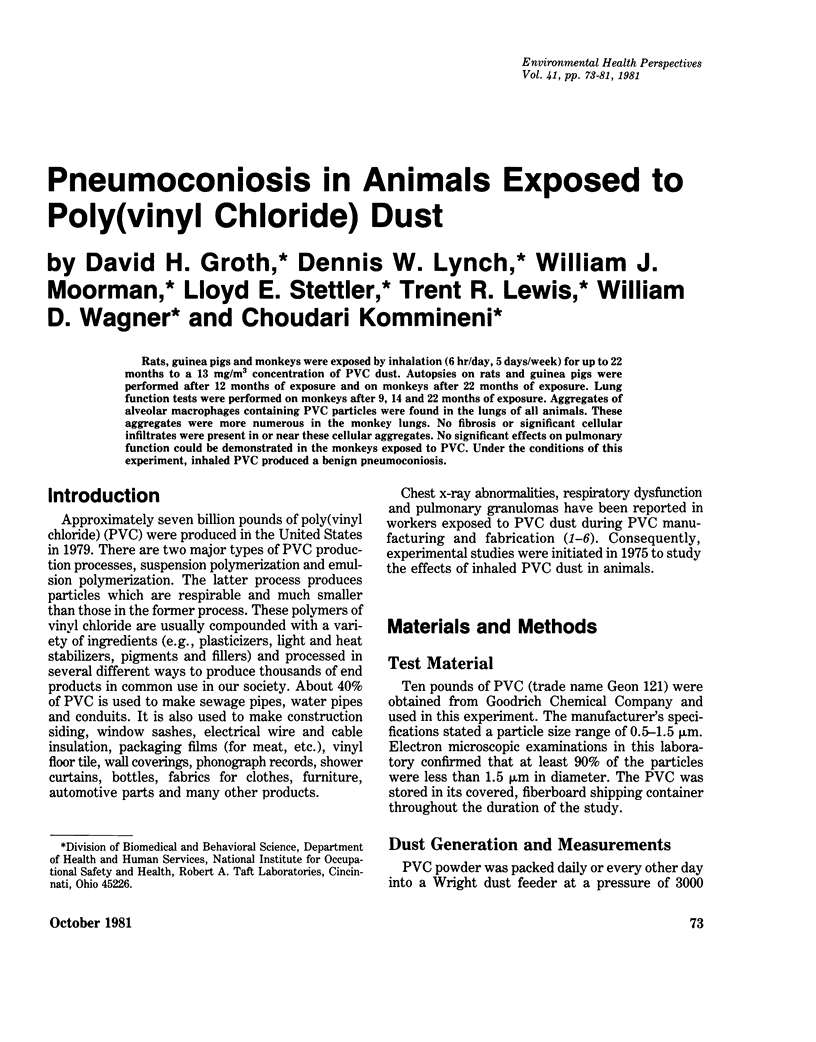
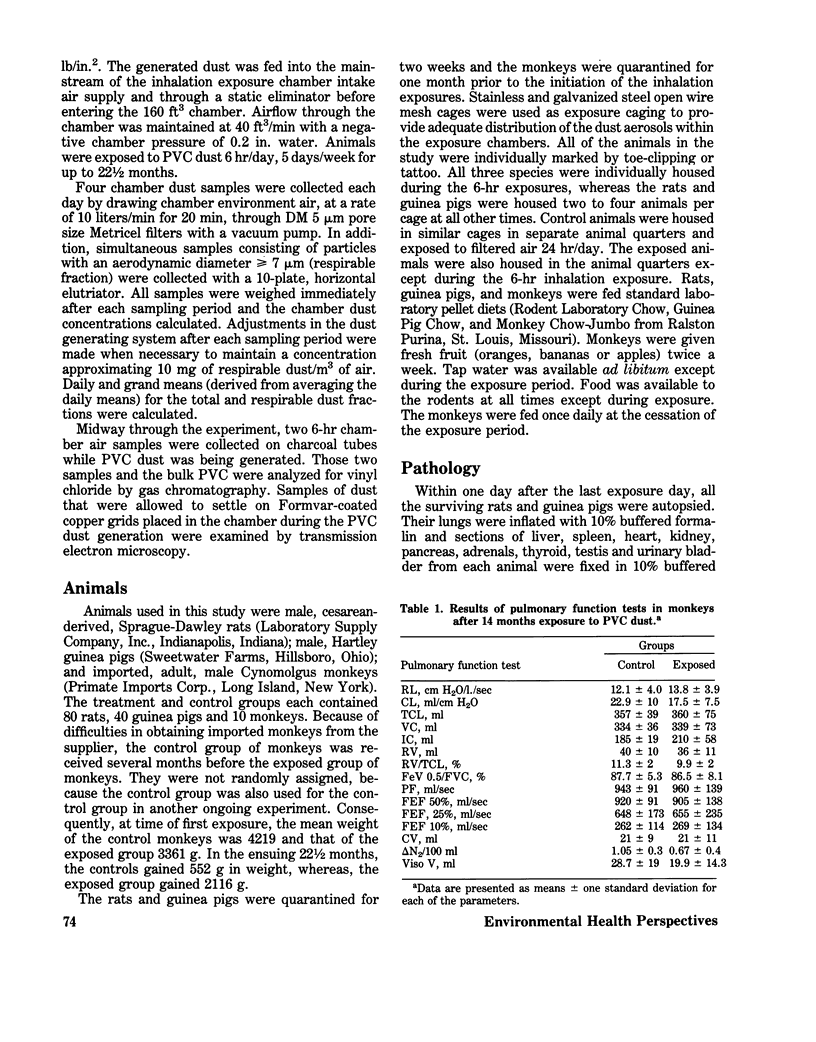
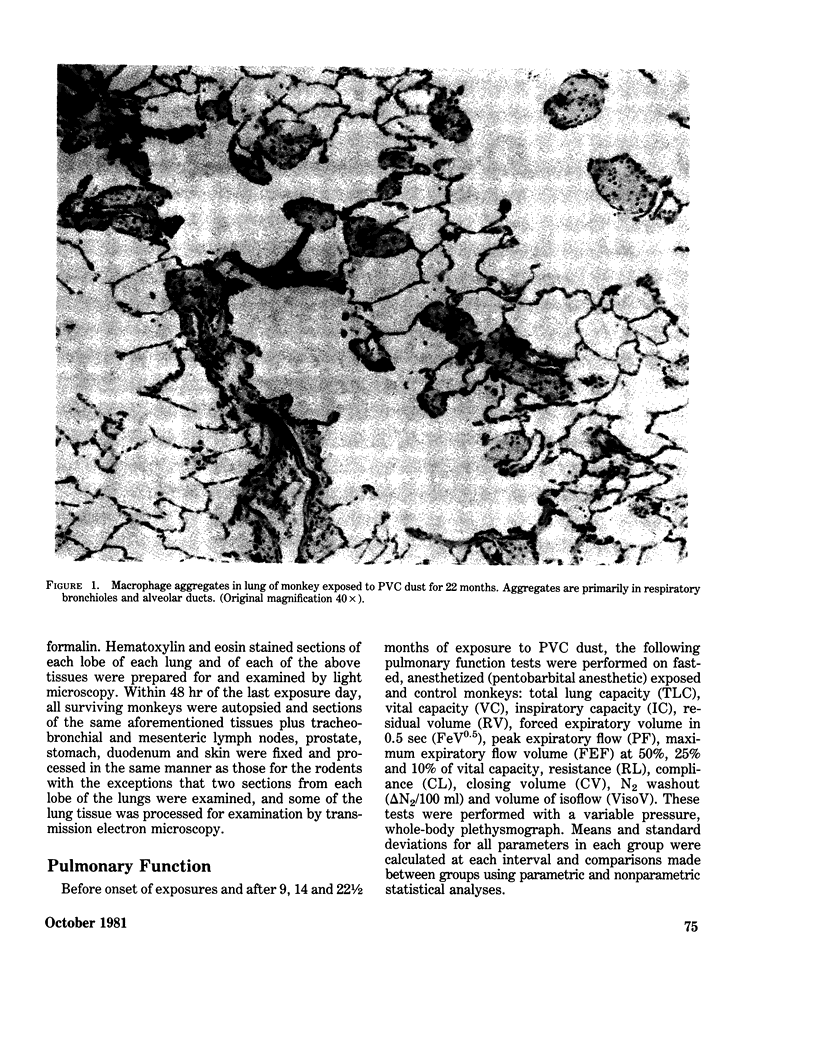
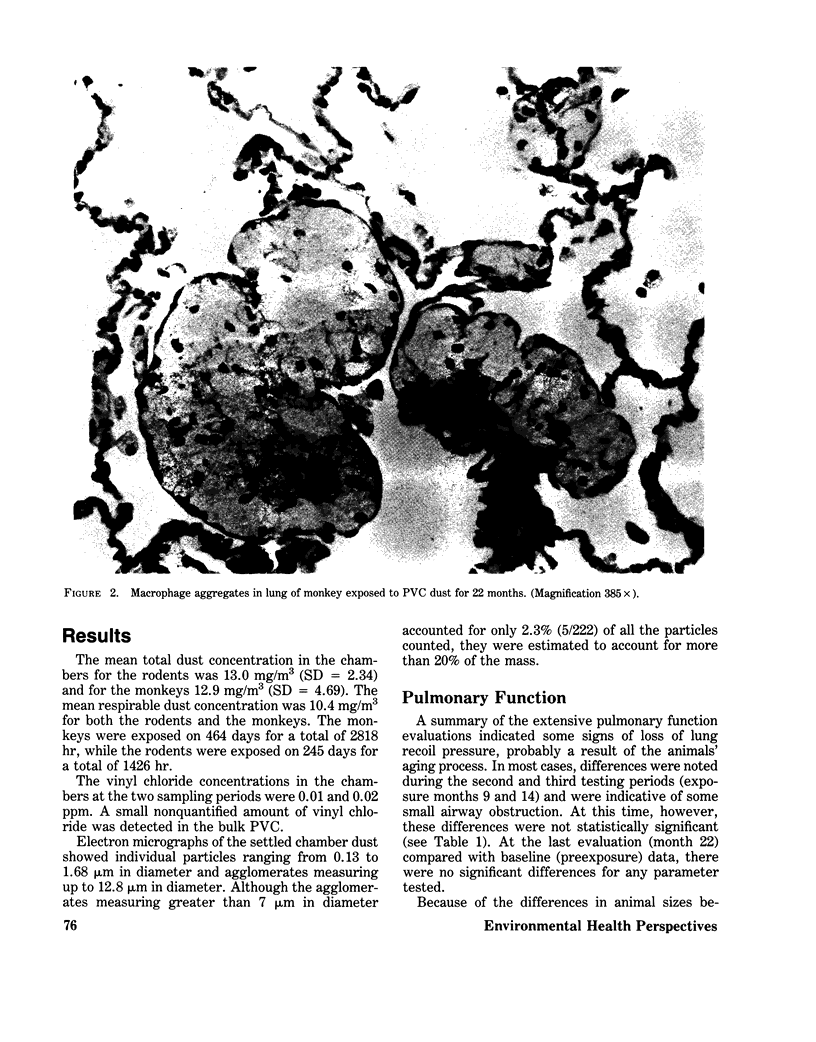
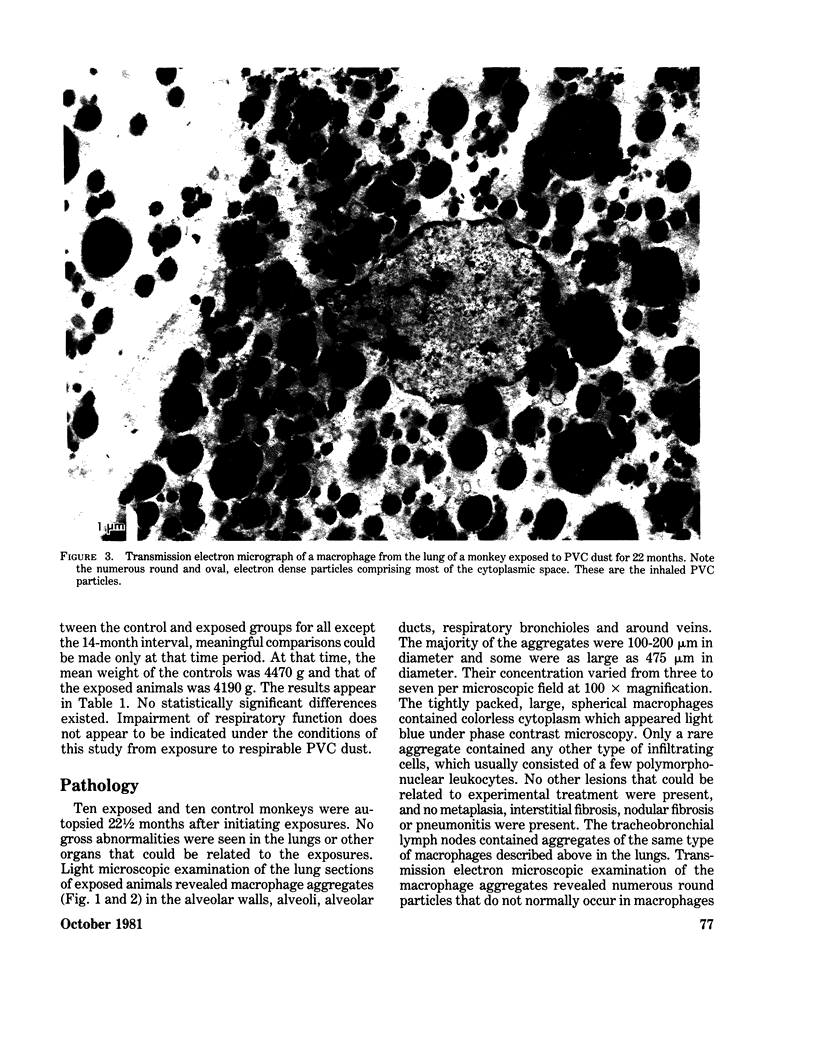
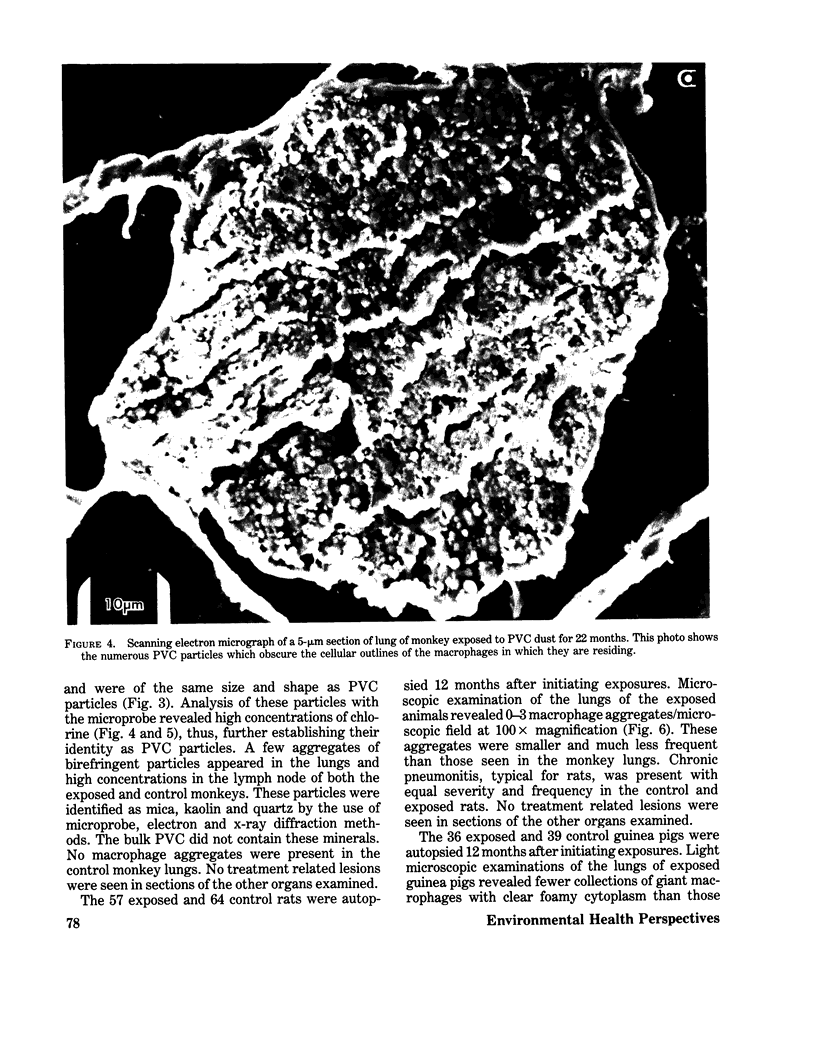
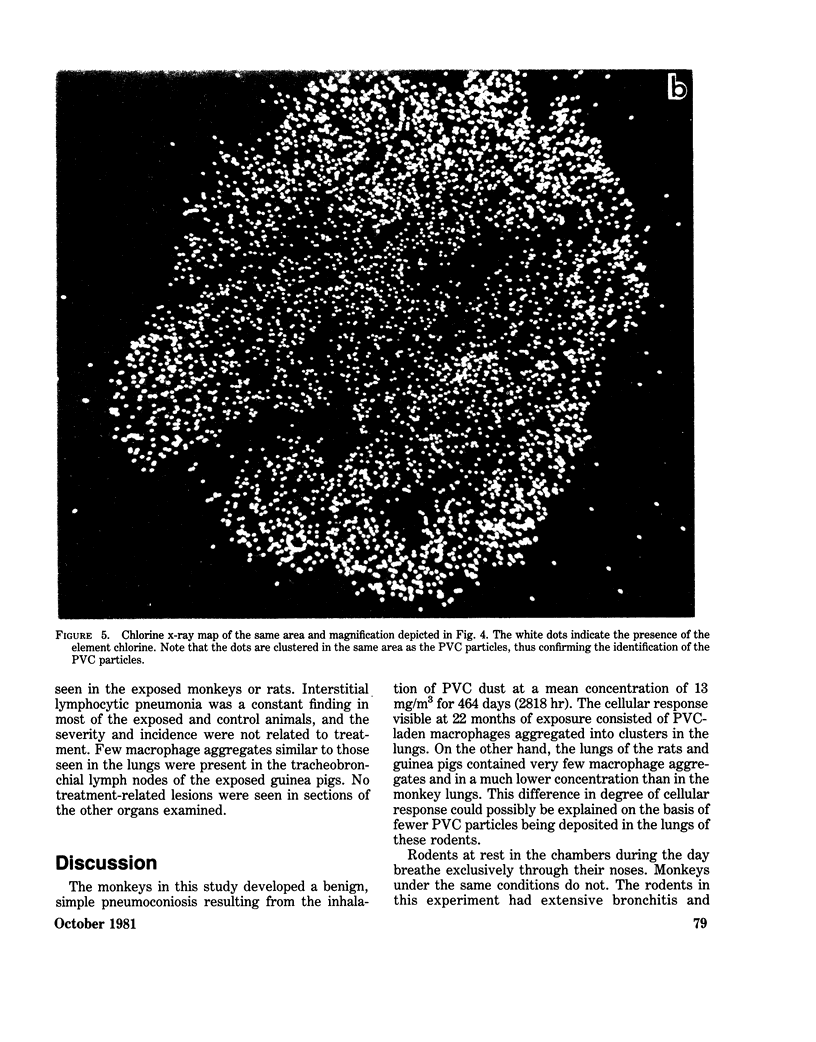
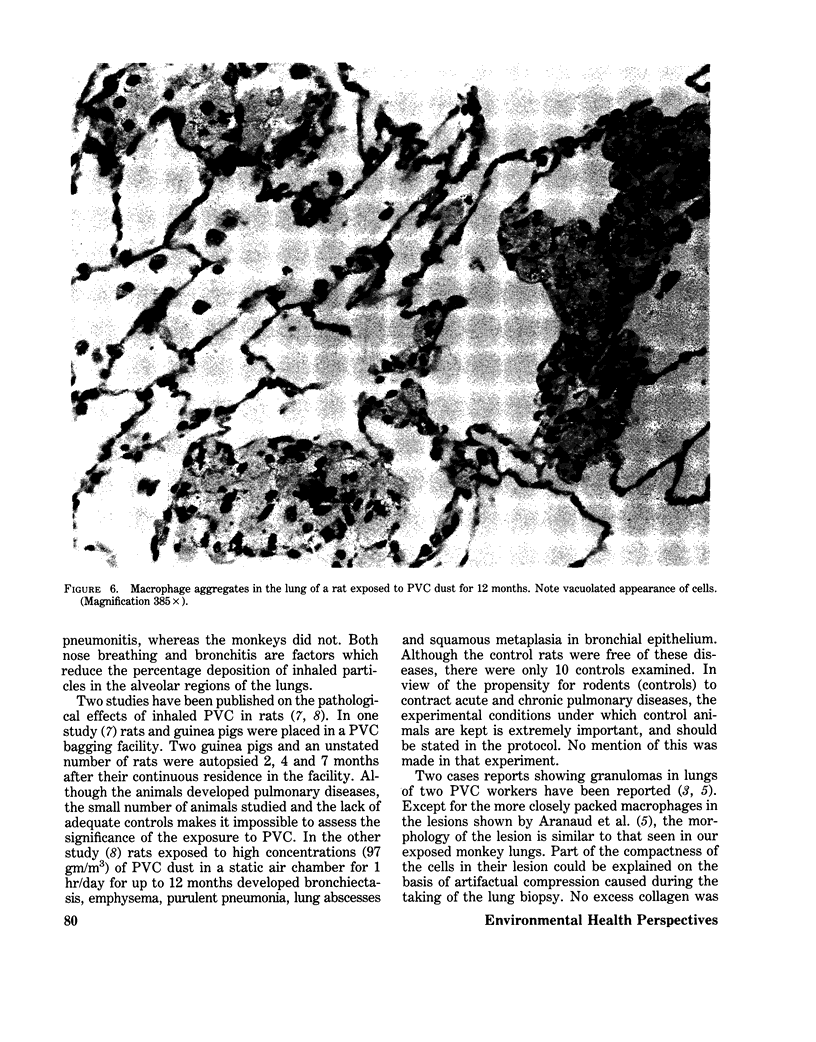
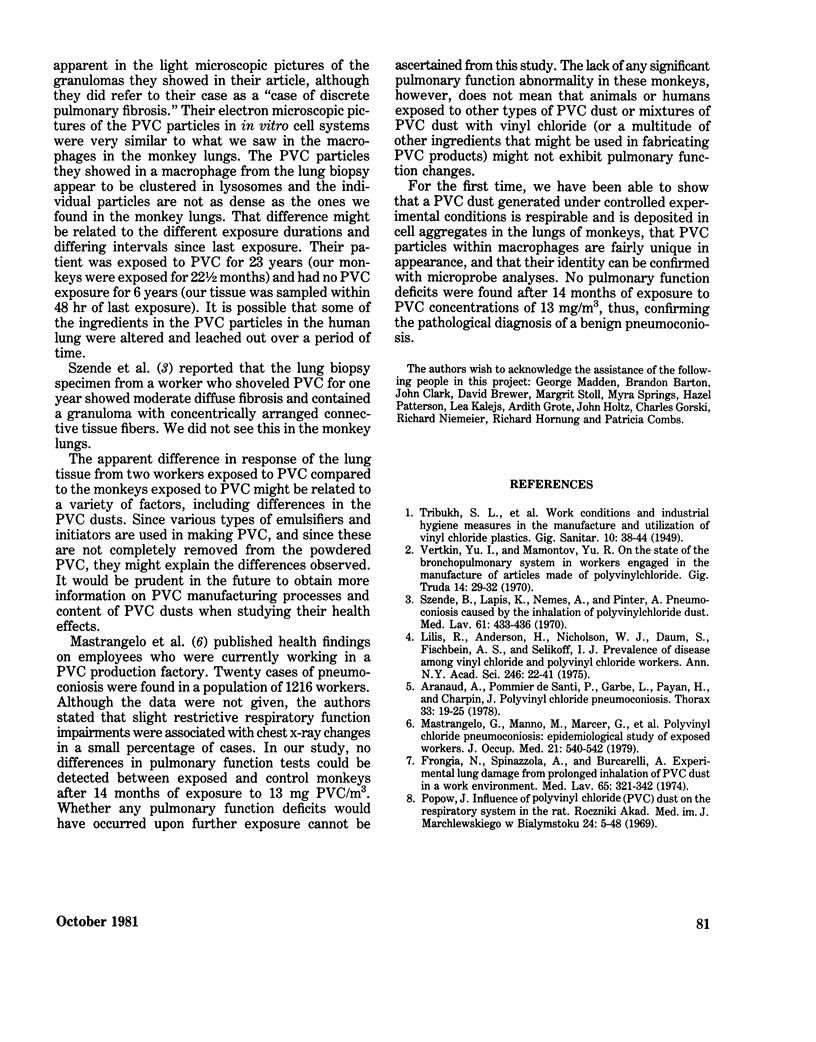
Images in this article
Selected References
These references are in PubMed. This may not be the complete list of references from this article.
- Arnaud A., Pommier de Santi P. P., Garbe L., Payan H., Charpin J. Polyvinyl chloride pneumoconiosis. Thorax. 1978 Feb;33(1):19–25. doi: 10.1136/thx.33.1.19. [DOI] [PMC free article] [PubMed] [Google Scholar]
- Lilis R., Anderson H., Nicholson W. J., Daum S., Fischbein A. S., Selikoff I. J. Prevalence of disease among vinyl chloride and polyvinyl chloride workers. Ann N Y Acad Sci. 1975 Jan 31;246:22–41. doi: 10.1111/j.1749-6632.1975.tb51078.x. [DOI] [PubMed] [Google Scholar]
- Mastrangelo G., Manno M., Marcer G., Bartolucci G. B., Gemignani C., Saladino G., Simonato L., Saia B. Polyvinyl chloride pneumoconiosis: epidemiological study of exposed workers. J Occup Med. 1979 Aug;21(8):540–542. [PubMed] [Google Scholar]
- Szende B., Lapis K., Nemes A., Pinter A. Pneumoconiosis caused by the inhalation of polyvinylchloride dust. Med Lav. 1970 Aug-Sep;61(8):433–436. [PubMed] [Google Scholar]








